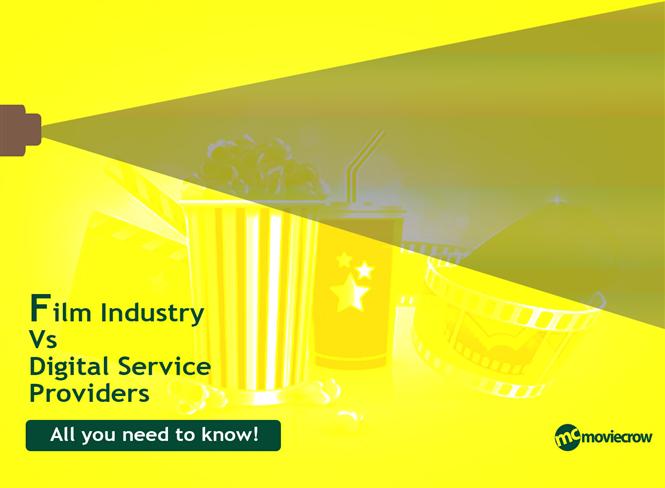Despite the battle between film industries of the South and Digital Service Providers like QUBE not being new, history is on the verge of being repeated from March 1, 2018. For those catching up, the Telugu Film Chamber of Commerce had declared an industry-wide strike from the said date and latest development is that the Tamil Film industry too have officially joined them. The strike we hear will be carried on by the film industries of all four South Indian states against the alleged high rates of the Digital Service Providers. Interestingly, the producers' council of the Tamil film industry had fought twice - one in 2015 and 2017 for the same reason; both times getting more or less the same results (no change in rates).
Since the strike this time shows signs of being more huge, we decided to give you a break-down of what's causing an issue, why is it a problem now and whether or not it warrants our attention.
Digital Service Providers - Who & What
Pretty much every movie go-er knows by now that just like our photographs, the films we see too evolved from print to digital. And similar to the cost cutting achieved through digital photography, movies theatres too got to spend less money by using digital projectors for screening their film instead of print rolls.
The service providers like QUBE (one of the major players in India) came into picture by giving out the equipment for digital projection from them instead of letting theatre owners invest a huge chunk on the same. In return, they started charging the theatre owners for maintenance of the equipment in addition to the service charges which is now the point of the whole debate here.
Virtual Print Fee & Rates
The collective cost that is paid for the equipment, its maintenance & the service provided by a digital service provider is known as the Virtual Print Fee or the VPF. Though there have been varied versions of how much a digital service provider charges the exhibitor, an approximate rate card provided by QUBE which provides to majority of screens in the country (4000 of the 8100 screens, excluding the 3300 its recent merger UFO Moviez screen to) can be found below :
Flat Rate - Yield
- Rs. 22, 500 (approx) - Unlimited Run + No.of shows
- Rs. 9000 for Week 1 and Rs. 7500 from week 2 (approx) - Upto 28 Shows
- Rs. 325 / Show (approx) - Upto 7 shows
These rates are inclusive of the odd chance of shifting the film screening from one theatre to another. An advance amount of Rs. 50,000 is charged before starting work on a movie and is adjusted towards billing during the release. It is worth mentioning here that even the highest slab of rate mentioned here i.e. Rs, 22,500 is way lesser than the approximate cost of a print roll which amounted upto Rs. 70,000.
The Objection
On one hand, the above mentioned rates which have been prevalent since the year 2005, are being dubbed as "exorbitant" by film producers; on the other the service providers claim that the VPF provided by them is the lowest in the world. They claim that their rates have been the same for about 13 years and are much less when compared to world industry standards (which is about Rs. 3,000,00). Added to this, there is a never-ending argument on who should be paying for the digital equipment, for which majority of the movie theatres (except multiplexes like Sathyam, PVR & INOX) have not invested in.
While the service providers justify that they are only taking pay-back for what has been invested by them, the producers observe that enough time has passed for the investment to be recouped. In simpler words, the producers do not want to take responsibility for the digital machines (or their maintenance) and are demanding an option similar to our broadband companies, where the modem is provided by and taken care of by the service provider and the end-user pays only the internet charges.
Other Sore Points
The DSPs generate a revenue through the ads one gets to view at movie theatres and apparently the producers do not have a say in the selection of ads or a share in the revenue. Since only an approximate of 800 screens in India function without the services of two major DSPs, the monopolisation is being called out.
